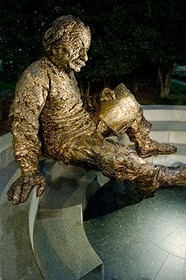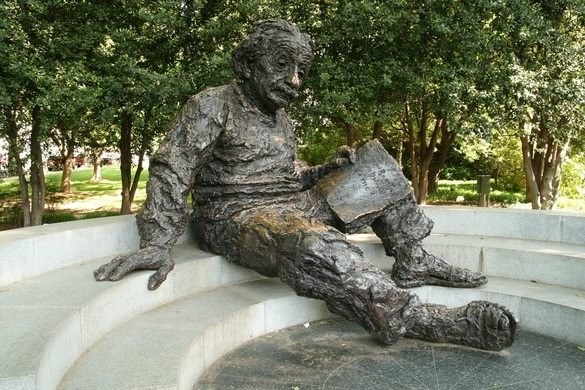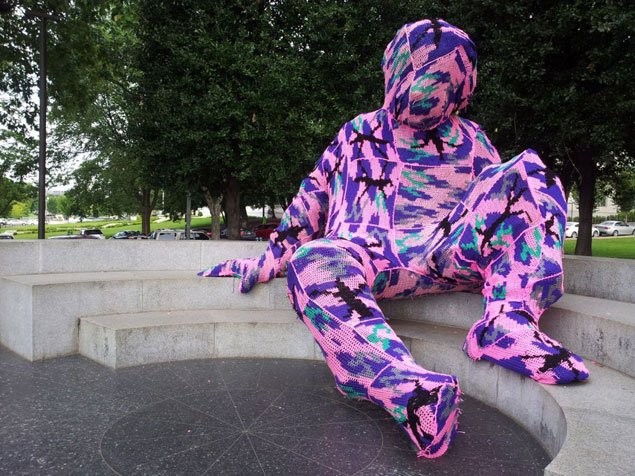Albert Einstein Memorial
Introduction
Text-to-speech Audio
Images
Albert Einstein Memorial Statue

The memorial during the day.

Guerilla crochet artist, Olek covers that statue in pink and purple fabric.

Backstory and Context
Text-to-speech Audio
This memorial sits at the corner of the National Academy of Sciences. It was unveiled on April 22, 1979 during one of the Academy’s annual meetings, on centennial of the scientists birth. This twelve foot tall figure of Einstein is seated on a three step bench of white granite. He holds a paper in his hand with mathematical equations that led to three of his most important scientific contributions; the photoelectric effect, theory of general relativity, and the equivalence of energy and matter.
The sculptor was Robert Berks, who was already known for his portrait busts of John F. Kennedy at the Kennedy Center. He based this sculpture on a bust of Einstein that he sculpted in 1953. The landscape architect, James A. Van Sweden, used emerald pearl imported from Norway, and over 2700 metal studs inserted to portray the stars, moon, and the sun. They were positioned by astronomers from the U.S. Naval Observatory, being in the correct spot as they were on the dedication date.
The unveiling of the statue came with a little bit of controversy. Einstein is wearing a sweat suit and sandals while just sitting on a bench. People believed he should have been portrayed in a more professional, scholarly manner. "He was retired. He didn't have to dress up formally anymore. Einstein had let his hair grow much longer, and he said that his hairstyle was the result of negligence. Wearing the loose sweat shirt and pants and sandals, I felt it was a device to get an abstract rhythm of his body," sculptor Berks said. The laid back tone of this statue helped make it popular with current residents and visitors alike. People love to come to him and just “hang out” with the genius by climbing on him for a picture.Sources
Albert Einstein, (sculpture).. https://siris-artinventories.si.edu/ipac20/ipac.jsp?&profile=all&source=~!siartinventories&uri=full=....
Gautreaux, Jeffrey. EINSTEIN SCULPTURE PROVOKES THOUGHT. May 05, 2002. http://muezproxy.marshall.edu:2057/hottopics/lnacademic/?shr=t&csi=144577&sr=HLEAD(%22EINSTEIN+SCULPTURE+PROVOKES+THOUGHT%22)+and+date+is+2002.
